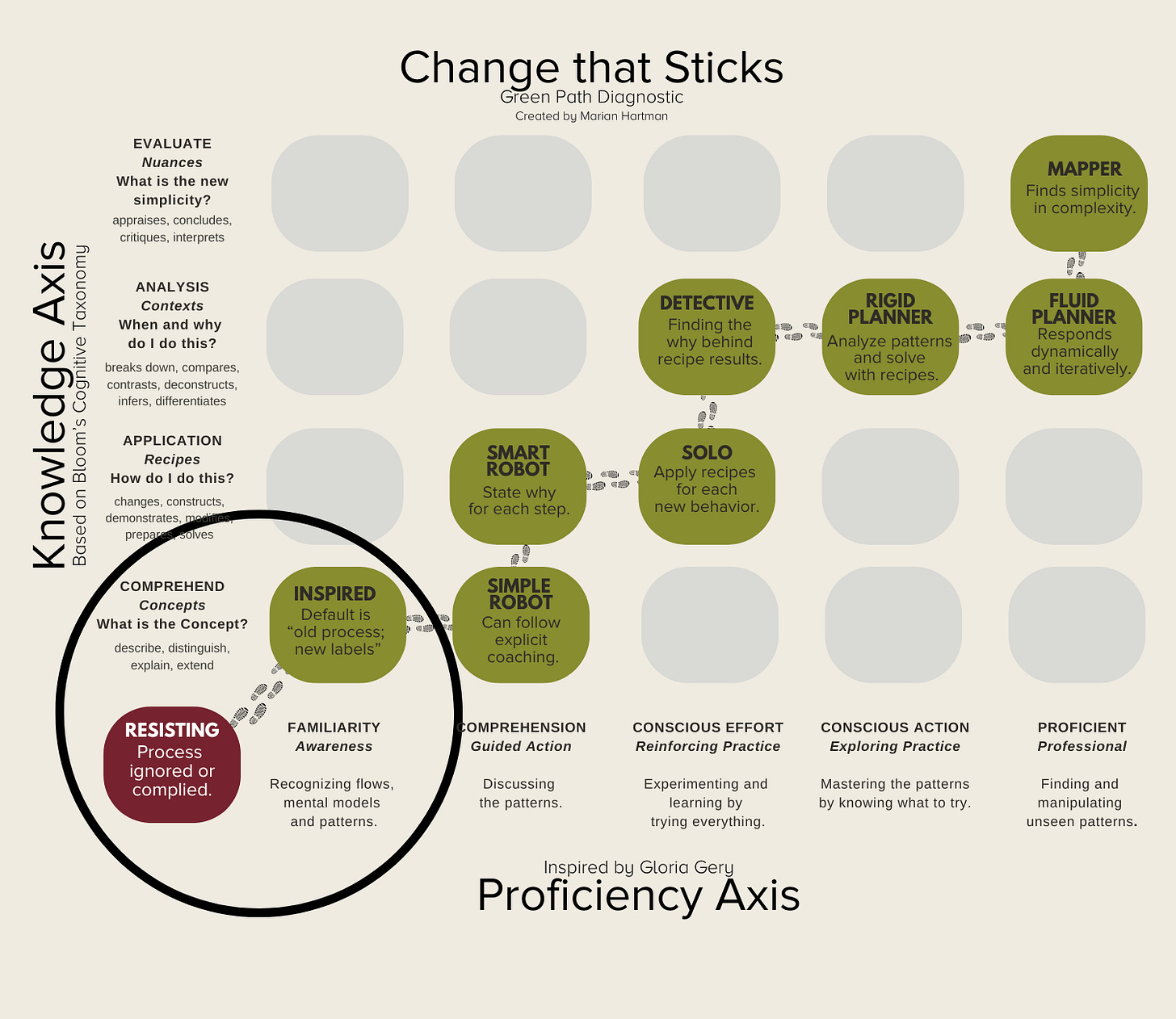You’ve been told to switch to Jira.
You’ve been told to set up a mentoring program.
You’ve been told to get everybody “doing TDD”.
But that isn’t a button to push. In fact, the way many organizations handle it, there will be a fair amount of resistance to handle because nobody enjoys disruption for no obvious reason.
Most organizations fail to help people get onto the green path at all:
For the sake of this month’s focus on Designing Microbehaviors for Lasting Change though, we’re going assume individuals are already on the Green Path, but early in their skill acquisition.
Our usual approach to “do X” or “switch to Y” is to provide a structured learning path to develop those skills. The issue is that most training programs focus on knowledge, enabling people to fake competence until they eventually learn—often through a long and painful process. However, while they’re still faking it, mistakes and chaos can occur. Nothing is worse than someone using the right terminology without actual expertise.
How do microbehaviors help?
Microbehaviors accelerate skill-building in a clear, measurable way. Small chunks make it easier for the brain to replace one action with another. Large behaviors are also harder to recognize and track, making results complex and harder to interpret.
How small is micro?
A microbehavior is any small action that can be applied immediately and produces a clear result.
Big Demand: You’ve been told to switch to Jira.
Microbehavior: When you need to create a new issue, put it in Jira. This allows you to rely on autosync to view everything in old system—again, one microbehavior at a time.
Measurement: Percentage of issues created in Jira versus the old system.
Big Demand: You’ve been told to set up a mentoring program.
Microbehavior: In your next 1:1 with your manager, identify two skills you want to learn for your own reasons, and ask them for two that they think will help your career. Discuss, then submit a “seeking mentoring” form.
Measurement: Check that each employee has such a form in the system within 2 weeks.
You’ve been told to get everybody “doing TDD”.
Microbehavior: Always write unit tests as comments, then convert to code.
Measurement: Observe results in the code.
Three key rules:
Smaller behaviors build skills faster. Beware of invisible dependencies!
If you tie actions to clear triggers (e.g., “When X happens, do Y”), they’ll be practiced more often.
Have the behavior result in an artifact that you can see / measure.
Choosing the right microbehaviors.
Focus on necessary actions, ignoring explanations and justifications.
Ask:
Does the action produce a clear result?
Can it replace an existing habit?
Can it be done quickly (minutes, not hours)?
Can it be done without requiring changes to other behaviors?
If not, break it down further.
If you haven’t already, become a paying subscriber to benefit from Arlo Belshee’s Safeguarding example with opportunity to engage for your content!





